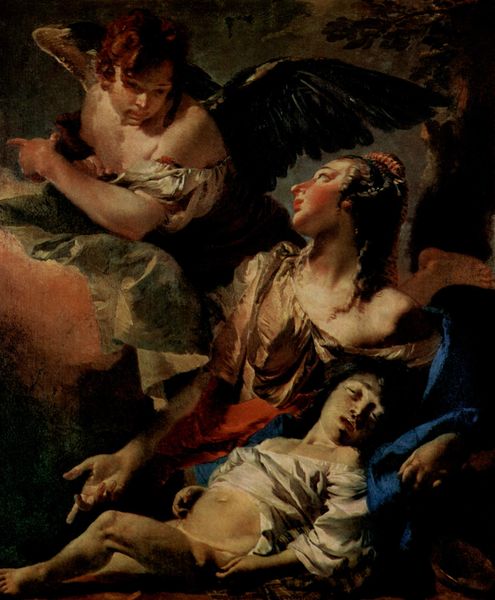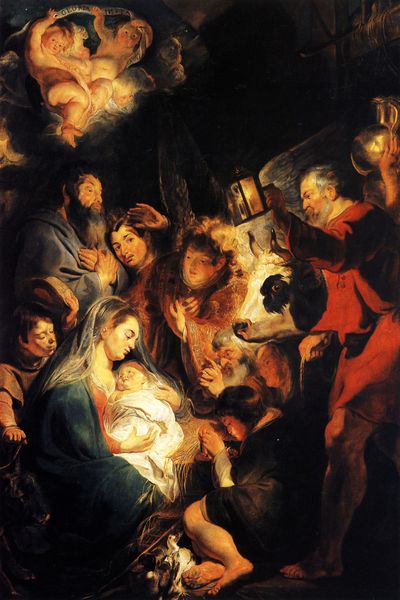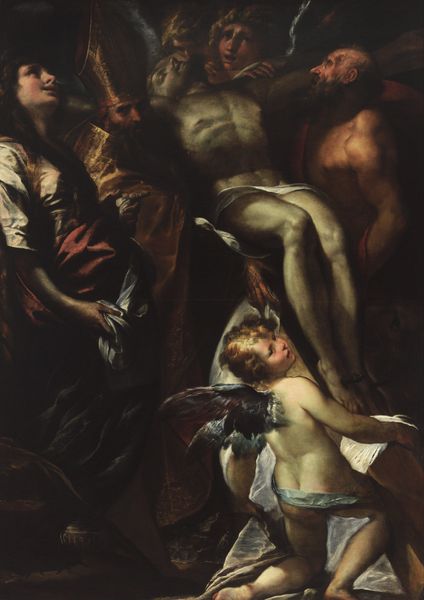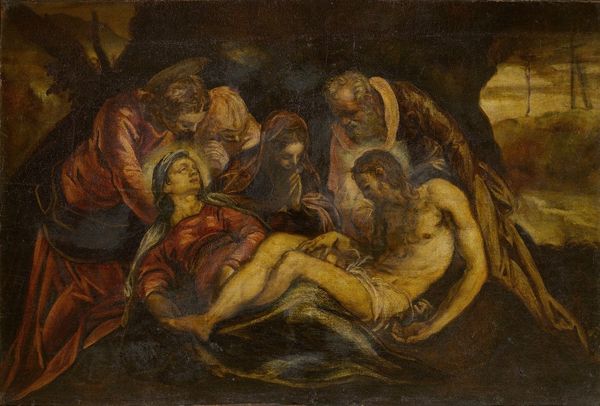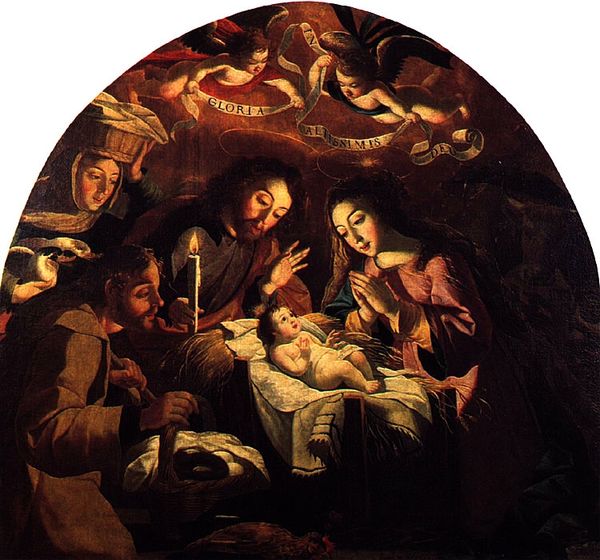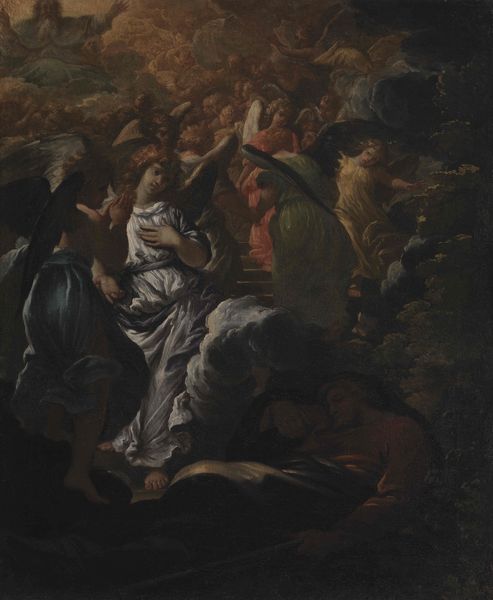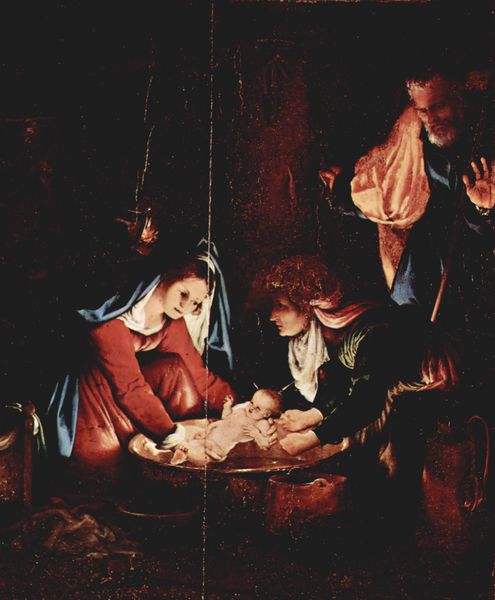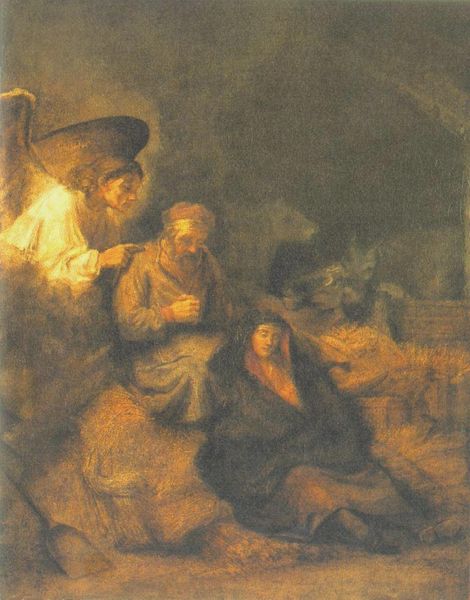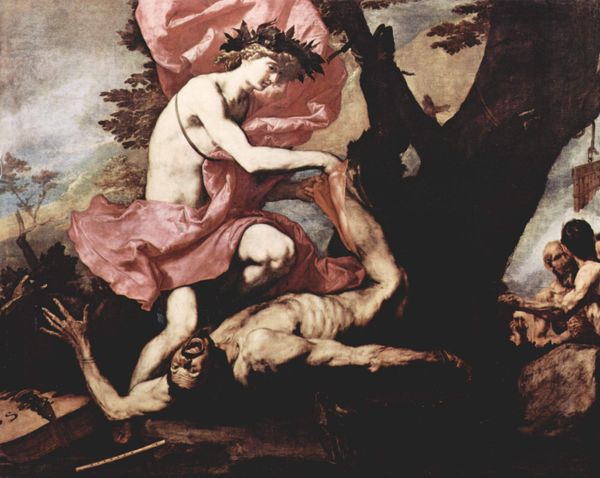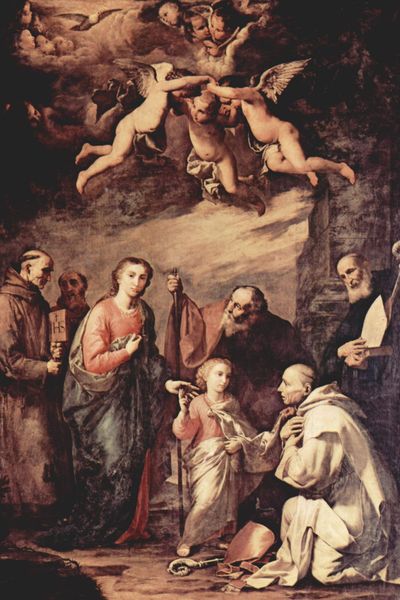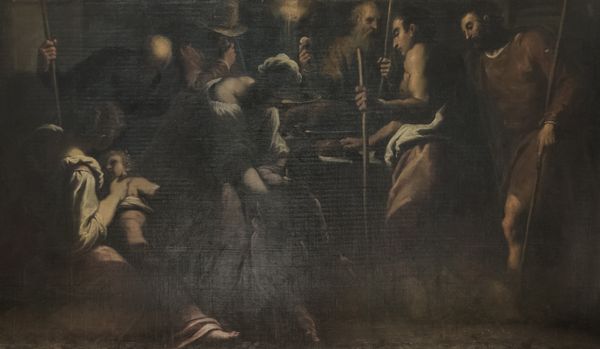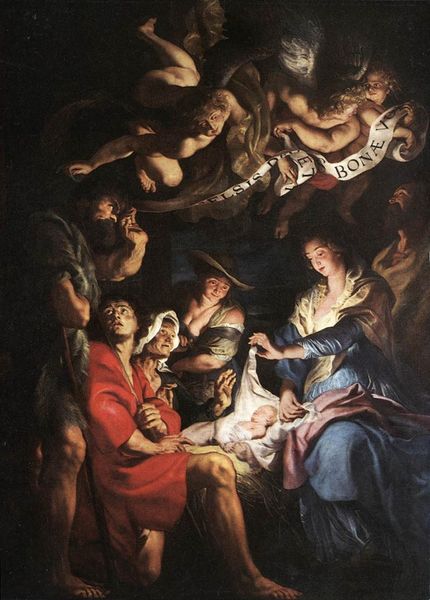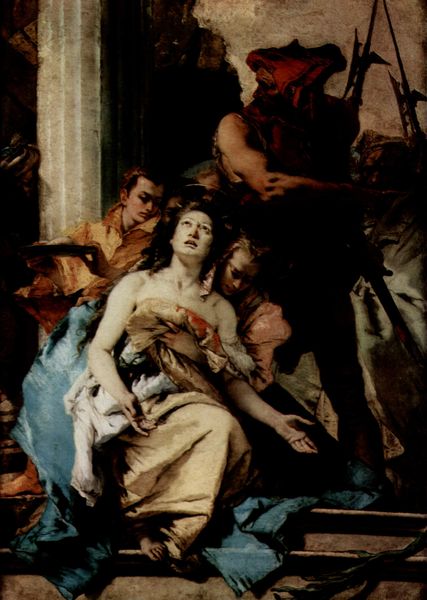
painting, oil-paint
#
allegory
#
baroque
#
painting
#
oil-paint
#
christianity
#
history-painting
#
charcoal
#
virgin-mary
Copyright: Public domain
Editor: Here we have Giovanni Battista Tiepolo's "The Education of the Virgin" from 1732, painted with oil. Looking at it, I'm struck by the contrast between the earthly figures and the celestial ones swirling above. What stands out to you about this piece? Curator: I'm drawn to how Tiepolo, within the confines of a religious commission, reveals the social conditions of artistic production. Consider the raw materials: the pigments ground by workshop assistants, the canvas woven by anonymous hands. Editor: So, you see the painting as more than just a depiction of a religious scene? Curator: Absolutely. The painting embodies labor, from the mining of the ochre and ultramarine pigments to their commodification through artistic patronage. Who was benefiting from this depiction and how did their consumption habits affect art production during this time? Editor: That's a perspective I hadn't considered. What about the stylistic choice of Baroque? How does that fit into the materialist view? Curator: The flamboyance of Baroque, the gold leaf shimmering—it speaks to the wealthy patrons who commissioned these works. The visual excess is directly tied to material wealth and the social display of that wealth. What processes did he have in place, and how would it affect the value for money for the patron commissioning such a grand depiction? Editor: It’s interesting to consider how even religious art is bound up with economics and social status. Thanks for opening my eyes to that. Curator: And thank you for helping see more dimensions of that world - together we brought different expertise on production and impact on religious art in Baroque, I appreciated this approach!
Comments
No comments
Be the first to comment and join the conversation on the ultimate creative platform.
